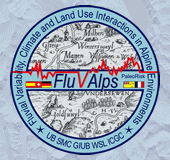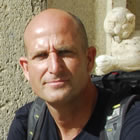The roots of the PaleoRisk-FluVAlps Research Group date back to 2006 and was founded by Professor Lothar Schulte as the FluvAlps Research Group (Fluvial Variability, Climate and Land Use Interactions in Alpine Environments) at the University of Barcelona obtaining more than 10 national R&D projects. These multi-disciplinary projects were the core of crystallization of multiple joint research activities of the original team which was composed mainly by young researchers from different disciplines and research fields linked to the Department of Physical and Regional Geography and the Department of Modern History of the University of Barcelona (UB), and the Meteorological Service of Catalonia (SMC). However, most of the group members had an extensive experience in matters of paleoenvironmental changes and natural hazards in mountain areas and developed a new innovative 4-D multi-archive methodology to integrate past floods in mountain flood plains over three millennia. Their activities focused on a solid and cooperative team work, application of competitive research projects, more than 25 fieldwork campaigns, publication of scientific papers and the quasi-annual organization of workshops. The research team participates and supports the international network of PAGES Floods Working Group (FWG).
Throughout the last decade, the interdisciplinary Research Group Paleoecology, Natural Hazards and Environmental Management (PaleoRisk) incorporated several foreign researchers, reaching a team up to 20 researchers (members, external collaborations and PhD fellowships) from Spain, Switzerland, New Zealand, France, Austria and Germany and was recognized by the Catalan Agency for Administration of University and Research Grants as Consolidated Research Group (GRC). The research activities of the GRC is structured in three related research fields. i) The scope of Paleogeoecology focuses on the understanding of past environmental and climatic changes with orders of magnitude that have the potential to generate significant impacts on the functioning of societies. ii) The studies under the umbrella of Natural Risks, aim to integrate multi-archive data to generate robust long time series of climatic and hydrological extreme phenomena along the Eastern Betic Range - Western Alps transect (Fig.3) and in the Southern Alps (New Zealand). iii) The analysis of the frequency, process velocity and spatial variability of past extreme events is required to interpret accurately the recent dynamics and human-environment interactions, as well as to achieve an adequate environmental land management.
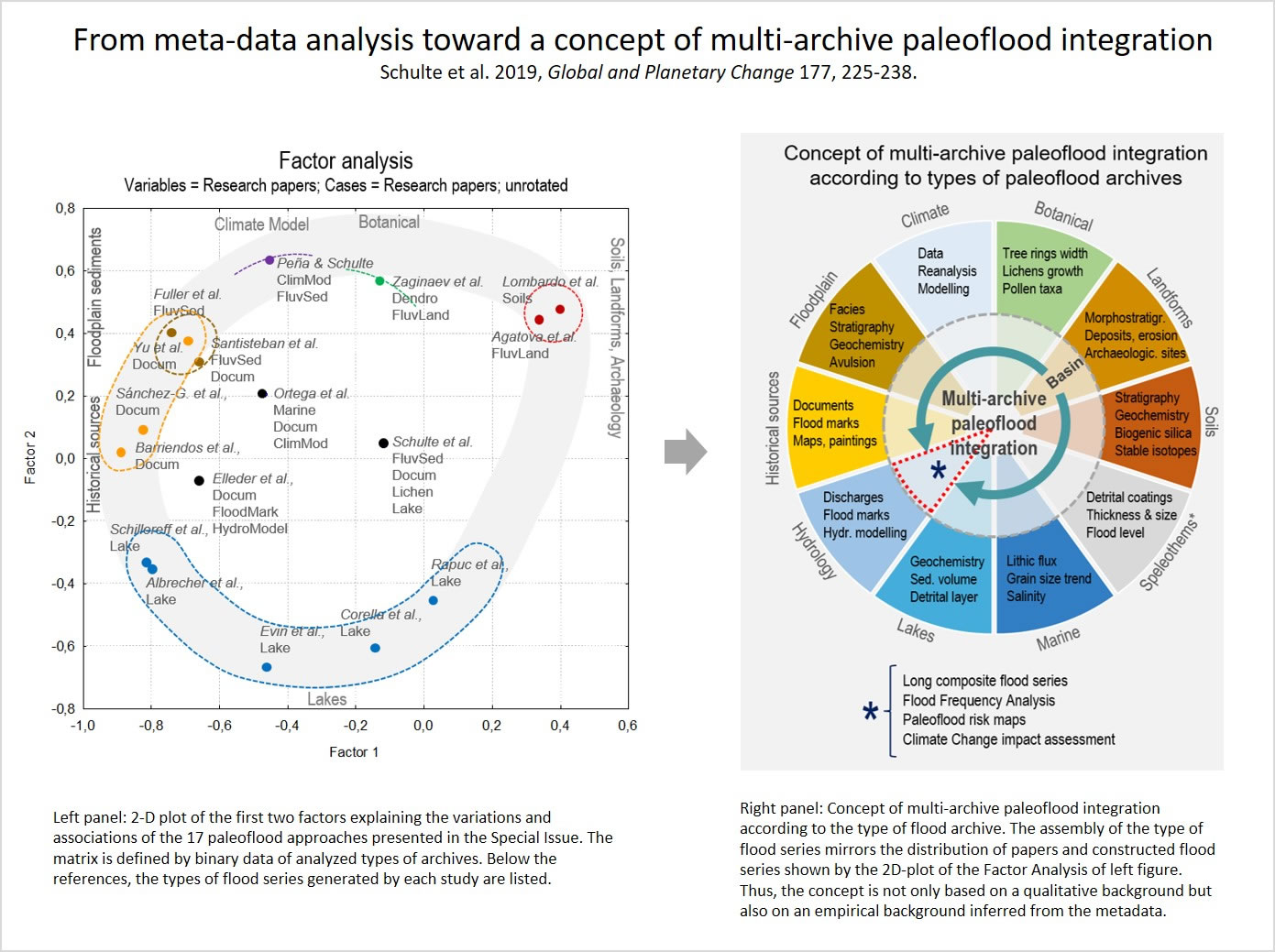
Figure: The development a new concept of multi-archive paleoflood data integration is a core activity of the PaleoRisk-FluvAlps Group.
FluVAlps Research Group
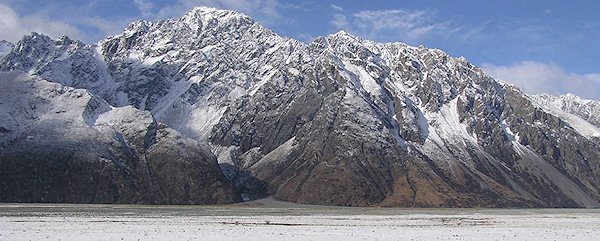
Figure 1: Fluvial landforms are a very common feature in mountain regions and are often suitable for paleoenvironmental studies. Left lateral Holocene alluvial fan joining the outwash plain of the Tasman Glacier (Southern Alps, New Zealand, 08.08.2007, © by L. Schulte)
The FluVAlps-plus Project (Sensitivity of alpine rivers to Global Change: High-resolution palaeoenvironmental records and modelling of extreme flood events in the Swiss Alps), the core activity of the group, aim to generate paleoenvironmental time series from a multiproxy approach and to contribute to the understanding of the effect of Global Change on fluvial systems and their response. The studies are mainly focused on the valley bottom of the Lütschine, Hasli, Lombach and Sahner valley, which are alpine sediment sinks in the Western Alps and is located close to the climate divide between cold polar and north atlantic air and humid Mediterranean air masses. Due to these geographic settings, the study area is particularly sensitive to changes in the atmospheric circulation and climatic extreme events and, furthermore, this region is known as a true "hot spot" of hydrological risk in the Alps.
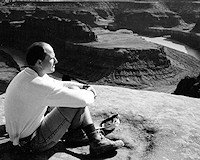
Lothar Schulte, professor of geomorphology and paleoecology, is the principal investigator of the Fluvalps Project. He coordinates the activities of the FluVAlps Research Group. The University of Barcelona hosts the project coordination.
E-mail: schulte@ub.edu
Phone: +34 93 403 78 87
The project focuses mainly on the analysis of fluvial sedimentary archives, palynological records, documentary sources and instrumental data using different time scales and resolutions to cover the last 4000 years. To obtain high-resolution proxies, geocronological modells will be based on an extensive range of radiocarbon dating (AMS) and will also consider optically stimulated luminescence dating (OSL). From various statistical techniques applied to the time series of intra-decadal resolution and its correlation with paleoclimatic reference records (e.g. 14C, 18O, 10Be, NAOi, sulfate excess, etc.), the relevance of the various external driving forces (orbital, solar, volcanic, changes in land cover) will be examined with regard to the variability of fluvial processes, flood frequency and magnitude. The high resolution time series will also allow the generation of proxies of human activity in recent millennia. These off-site studies have a special significance to improve chronological accuracy of land uses such as prehistoric mining, which is still insufficiently dated in the Alps.
The reciprocal calibration of long sedimentary time series, historical sources and instrumental data enable the assessment of the recent catastrophic flood events (e.g. 22.-23.08.2005) and the calculation of historical flood discharges. The understanding of aggradation processes, behavior of floods and related climatic patterns are key issues to model future scenarios and to provide valid information to authorities flood risks mitigation.
Integrated Graduate and Master course teaching
Geography students from the University of Barcelona visited during a fieldtrip last April the Gegant Cave (Sitges, Spain) known as one of the few sites in Northeastern Spain with Neanderthal fossils. By the way alumni experienced minimum Sea Surface Temperatures and the curvature of the earth (background).
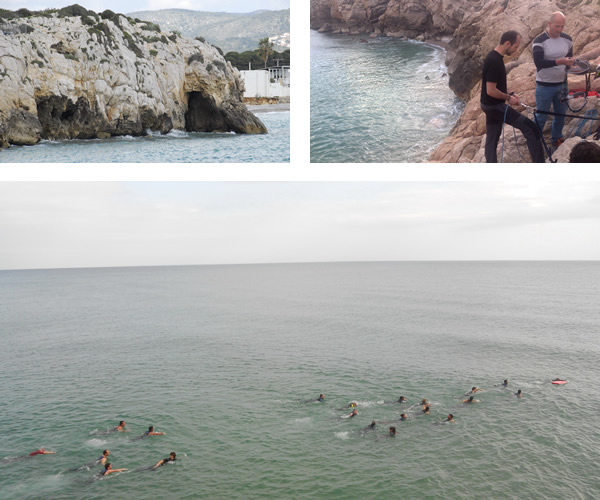
Schulte, L. et al. 2019.
Integration of multi-archive datasets towards the development of a four-dimensional paleoflood model in alpine catchments.
Global and Planetary Change 180, 66-88.
Peña, J.C.; Schulte, L., 2020.
Simulated and reconstructed atmospheric variability and their relation with large Pre-industrial summer floods in the Hasli-Aare catchment (Swiss Alps) since 1300 CE.
Global and Planetary Change 190, 103191.
Schulte, L. et al., 2019.
Pluridisciplinary analysis and multi-archive reconstruction of paleofloods: societal demand, challenges and progress.
Global and Planetary Change 177, 225-238.
Blöschl, G. et al. 2020.
Current European flood-rich period exceptional compared with past 500 years.
Sánchez-García et al. 2019.
500-year flood history in the arid environments of south-eastern Spain. The case of the Almanzora River.
Global and Planetary Change, 102987.
Schulte, L. et al. 2015.
A 2600-year history of floods in the Bernese Alps, Switzerland: frequencies, mechanisms and climate forcing.
Hydrology and Earth System Sciences 19, 3047-3072.
Peña, J.C. et al. 2015.
Influence of solar forcing, climate variability and atmospheric circulation patterns on summer floods in Switzerland.
